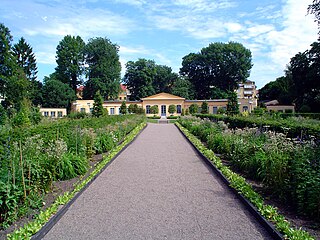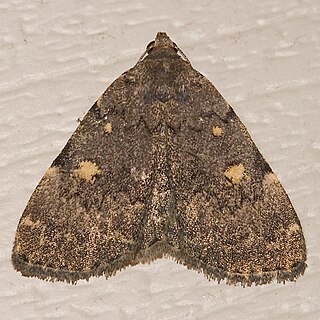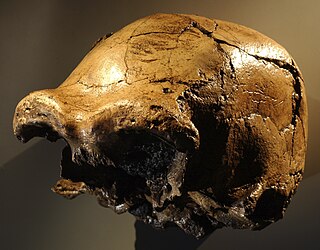
The harpy eagle is a large neotropical species of eagle. It is also called the American harpy eagle to distinguish it from the Papuan eagle, which is sometimes known as the New Guinea harpy eagle or Papuan harpy eagle. It is the largest bird of prey throughout its range, and among the largest extant species of eagles in the world. It usually inhabits tropical lowland rainforests in the upper (emergent) canopy layer. Destruction of its natural habitat has caused it to vanish from many parts of its former range, and it is nearly extirpated from much of Central America. The genus Harpia, together with Harpyopsis, Macheiramphus and Morphnus, form the subfamily Harpiinae.

The International Code of Nomenclature for algae, fungi, and plants is the set of rules and recommendations dealing with the formal botanical names that are given to plants, fungi and a few other groups of organisms, all those "traditionally treated as algae, fungi, or plants". It was formerly called the International Code of Botanical Nomenclature (ICBN); the name was changed at the International Botanical Congress in Melbourne in July 2011 as part of the Melbourne Code which replaced the Vienna Code of 2005.

Flora is all the plant life present in a particular region or time, generally the naturally occurring (indigenous) native plants. The corresponding term for animals is fauna, and for fungi, it is funga. Sometimes bacteria and fungi are also referred to as flora as in the terms gut flora or skin flora.

A currency symbol or currency sign is a graphic symbol used to denote a currency unit. Usually it is defined by a monetary authority, such as the national central bank for the currency concerned.
Cernache do Bonjardim is a former civil parish in the municipality of Sertã, central Portugal. In 2013, the parish merged into the new parish Cernache do Bonjardim, Nesperal e Palhais. The population in 2011 was 3,052, in an area of 71.59 km2.

Cerro de Punta or Cerro Punta is the highest peak in Puerto Rico, rising to 1,338 meters (4,390 ft) above sea level. The mountain is part of the Cordillera Central and is located on the town boundary between the municipalities of Ponce and Jayuya in the central region of the main island of Puerto Rico.

Ticodendron incognitum is the only species of Ticodendron, and the only member of the family Ticodendraceae. It is most closely related to the family Betulaceae.

Gomortega keule is a species of tree endemic to Chile. It is the sole species of the genus Gomortega and, according to the APG IV system of 2016, of the monotypic family Gomortegaceae, assigned to the order Laurales in the clade magnoliids.

The family Fulgoridae is a large group of hemipteran insects, especially abundant and diverse in the tropics, containing over 125 genera worldwide. They are mostly of moderate to large size, many with a superficial resemblance to Lepidoptera due to their brilliant and varied coloration. Various genera and species are sometimes referred to as lanternflies or lanthorn flies, but neither do their heads emit light, nor are they even distantly related to flies.

The term fish kill, known also as fish die-off, refers to a localized die-off of fish populations which may also be associated with more generalized mortality of aquatic life. The most common cause is reduced oxygen in the water, which in turn may be due to factors such as drought, algae bloom, overpopulation, or a sustained increase in water temperature. Infectious diseases and parasites can also lead to fish kill. Toxicity is a real but far less common cause of fish kill.

The Herminiinae are a subfamily of moths in the family Erebidae. The members of the subfamily are called litter moths because the caterpillars of most members feed on dead leaves of plants, though others feed on living leaves, and/or the mushrooms of fungi as in the case of genus Idia.

Candeleda is a town and municipality located in the province of Ávila, in the autonomous community of Castile and León, Spain. According to the 2011 INE census, the municipality has a population of 5,213 inhabitants, making it the fifth largest municipality in the province after Ávila –the capital–, Arévalo, Arenas de San Pedro and Las Navas del Marqués. The town is located on the southern hillside of the Gredos mountains, 432 m above sea level, giving it a microclimate with a thermal regime of mild winters and hot summers and average summer temperatures of 26 °C.

Idia is a genus of litter moths of the family Erebidae first described by Jacob Hübner in 1813.
Epizeuxis is a genus of moths of the family Noctuidae, it is considered to be a synonym of Idia by many authors, but some retain it as a valid genus. If treated as valid, it contains at least the type species Epizeuxis calvariaDenis & Schiffermüller, 1775.

Idia aemula, the common idia, powdered snout or waved tabby, is a litter moth of the family Erebidae. The species was first described by Jacob Hübner in 1813. It is found from Canada south to Florida and Texas. It has been reported in the Palearctic.

Idia americalis, the American idia or American snout, is a litter moth of the family Erebidae. The species was first described by Achille Guenée in 1854. It is commonly found in moist forests in North America, ranging from southern Canada to Florida and Texas. It is nocturnal and can be lured by sugar baits and light traps.
Idia parvulalis is a species of litter moth of the family Erebidae first described by William Barnes and James Halliday McDunnough in 1911. It is found in North America, including its type location, the Santa Catalina Mountains in south-eastern Arizona.

Porto de Mós is a town and a municipality of Estremadura province in Leiria District. It is in the Centro Region and the Pinhal Litoral subregion. The population in 2011 was 24,342, in an area of 261.83 km2.

The Daka calvaria, otherwise known as the Dakaskull, or specimen number BOU-VP-2/66, is a Homo erectus specimen from the Daka Member of the Bouri Formation in the Middle Awash Study Area of the Ethiopian Rift Valley.

Eyserheide is a hamlet in the southeastern Netherlands. It is located close to the village of Eys in the municipality of Gulpen-Wittem, Limburg, around 15 km east of Maastricht. The name refers to a former heathland in the area. The village has a population of 90 people.

















